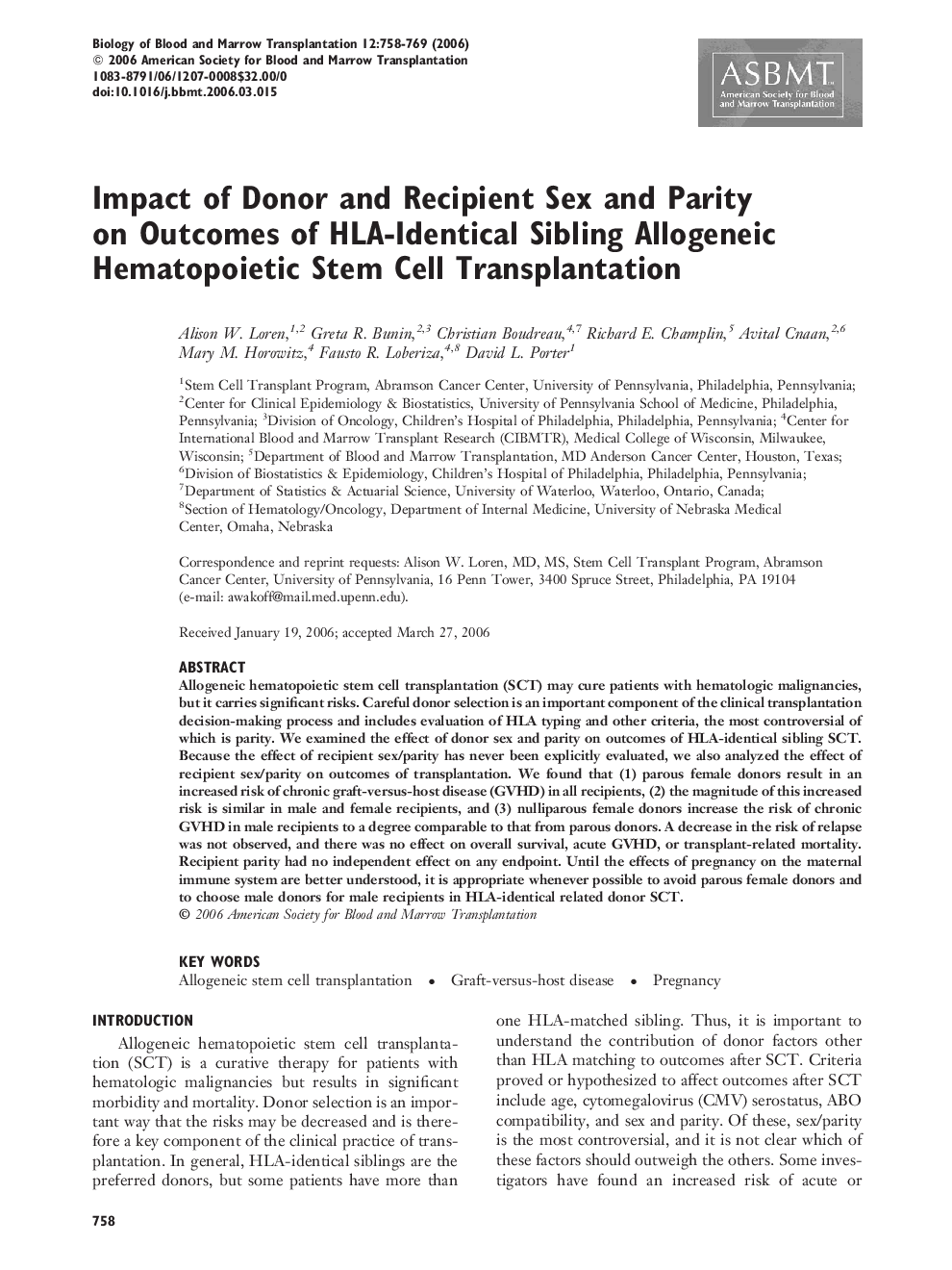| Article ID | Journal | Published Year | Pages | File Type |
|---|---|---|---|---|
| 2105175 | Biology of Blood and Marrow Transplantation | 2006 | 12 Pages |
Allogeneic hematopoietic stem cell transplantation (SCT) may cure patients with hematologic malignancies, but it carries significant risks. Careful donor selection is an important component of the clinical transplantation decision-making process and includes evaluation of HLA typing and other criteria, the most controversial of which is parity. We examined the effect of donor sex and parity on outcomes of HLA-identical sibling SCT. Because the effect of recipient sex/parity has never been explicitly evaluated, we also analyzed the effect of recipient sex/parity on outcomes of transplantation. We found that (1) parous female donors result in an increased risk of chronic graft-versus-host disease (GVHD) in all recipients, (2) the magnitude of this increased risk is similar in male and female recipients, and (3) nulliparous female donors increase the risk of chronic GVHD in male recipients to a degree comparable to that from parous donors. A decrease in the risk of relapse was not observed, and there was no effect on overall survival, acute GVHD, or transplant-related mortality. Recipient parity had no independent effect on any endpoint. Until the effects of pregnancy on the maternal immune system are better understood, it is appropriate whenever possible to avoid parous female donors and to choose male donors for male recipients in HLA-identical related donor SCT.
